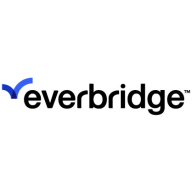

Blackberry AtHoc and Everbridge Public Warning compete in emergency and critical communication systems. Blackberry AtHoc offers more competitive pricing and strong customer support, while Everbridge Public Warning leads in feature diversity with its advanced communication capabilities.
Features: Blackberry AtHoc focuses on network dependencies, encrypted communications, and robust security options. Everbridge Public Warning provides comprehensive geo-targeted alerts, two-way communication, and advanced communication features for effective large-scale public warnings.
Ease of Deployment and Customer Service: Blackberry AtHoc provides simplified integrations and attentive customer service for smoother deployments. Everbridge Public Warning offers a comprehensive deployment approach and a broader support network that accommodates large implementations better.
Pricing and ROI: Blackberry AtHoc presents an accessible setup cost, delivering appealing ROI due to lower initial investments. Everbridge Public Warning has a higher setup cost, justified by its advanced features, delivering substantial long-term ROI. Decisions depend on priority between cost efficiency and feature investment.
| Product | Market Share (%) |
|---|---|
| Blackberry AtHoc | 11.0% |
| Everbridge Public Warning | 8.4% |
| Other | 80.6% |
Blackberry AtHoc is a comprehensive critical event management solution designed to facilitate rapid communication and coordination during emergencies. It enables organizations to effectively respond to critical incidents, ensure employee safety, and minimize the impact of disruptions.
The primary use case of Blackberry AtHoc is emergency notification and response. It allows organizations to send alerts and notifications in real-time via multiple channels, including mobile devices, emails, SMS, and digital displays. This ensures that critical information reaches employees, stakeholders, and relevant authorities swiftly and reliably, enabling them to take immediate action.
The most valuable functionality of Blackberry AtHoc is its ability to provide two-way communication during emergencies. It enables recipients to acknowledge alerts, report their status, and request assistance. This bi-directional communication ensures that organizations have an accurate understanding of the situation and can allocate resources effectively.
Blackberry AtHoc helps organizations by enhancing their emergency preparedness and response capabilities. It enables them to establish a centralized command center, where they can monitor and manage critical events. This allows for better coordination of response efforts, ensuring that the right actions are taken promptly.
Moreover, Blackberry AtHoc facilitates collaboration and information sharing among different stakeholders during emergencies. It enables organizations to establish secure chat groups, share documents, and exchange real-time updates. This fosters a collaborative environment, enabling effective decision-making and response.
The Everbridge next generation public warning platform provides a unified, flexible and modular alerting console from which public authorities can create and control geo targeted public alerts to an affected area or at countrywide scale.
Everbridge provides all the necessary back end components installed with the mobile network operators to transmit these alerts reliably and securely to the public onto their mobile phones.
The platform seamlessly combines modern mobile phone alerting capabilities with classic communication channels such as email, voice calls, sirens , radio, tv, social media, digital signage and opt-in address based systems
We monitor all Critical Event Management (CEM) reviews to prevent fraudulent reviews and keep review quality high. We do not post reviews by company employees or direct competitors. We validate each review for authenticity via cross-reference with LinkedIn, and personal follow-up with the reviewer when necessary.